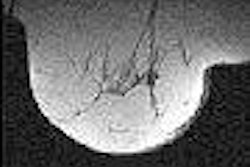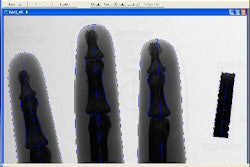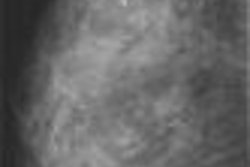Having her radiologist interpret a mammogram right away may give a woman a warm and fuzzy feeling about her annual exam, but it's not going to impact more important issues -- cancer detection rates and recall rates.
In a retrospective study, radiologists from Duke University Medical Center in Durham, NC, compared immediate and batch interpretation methods in more than 7,000 women who underwent screening mammograms over nine months.
"Immediate interpretation ... offers potential advantages to patients. They are able to avoid a second office visit if additional imaging is required, and the time until results are received is decreased," wrote Dr. Sujata Ghate and colleagues. "For the radiologist, immediate interpretation adds additional time demands and scheduling disruptions" (Radiology, April 2005, Vol. 235:1, pp. 31-35).
For this study 3,441 exams were read while the patients waited for the results. Another 3,932 were interpreted in a batch session with results mailed to the patients. There was no significant difference in breast density between the two groups. The authors looked specifically at recall, cancer detection, and false-negative rates.
The results showed that the recall rate was significantly higher, with a 20% increase in the number of additional views required for the immediate-read group versus the batch-read group. The cancer detection rate in the immediate-read group was 0.49% versus 0.43% in the batch-read group. The false-positive rate in both sets of women was 0.01%.
"We found no significant differences in the cancer detection rates or false-negative rates between the two groups," the researchers wrote. "We hypothesize that factors such as pressure and distraction of the diagnostic studies, in combination with the convenient presence of the screening patient, lead to use of additional imaging rather than focused decision-making."
In fact, immediate interpretation ultimately led to an increase in radiation dose rather than any upswing in cancer detection. Previous studies have shown that immediate interpretation is also not cost-effective. While patients have claimed that on-the-spot reads would cause less anxiety, they are not willing to pay extra for that service (American Journal of Roentgenology, September 2001, Vol. 177:3, pp. 579-583).
Batch interpretation also allows radiologists to take advantage of computer-aided detection and double reading, the authors added. While they acknowledge that this retrospective study may suffer from a selection bias, the results did bring about a change in their practice pattern.
"We now perform immediate interpretation for only those patients who live more than an hour from our facility," they stated. "As a result, we have subjectively noticed a reduction in scheduling backups and subsequent patient frustration."
By Shalmali Pal
AuntMinnie.com staff writer
April 20, 2005
Related Reading
CAD offers promising second opinion, even in dense breasts, March 15, 2005
Canadian breast cancer survey reveals patient hardship, March 15, 2005
Studies decipher mammo trends, explore ways to alleviate patient distress, February 2, 2005
Patients won't pay more for quick breast cancer screening results, September 6, 2001
Copyright © 2005 AuntMinnie.com



















